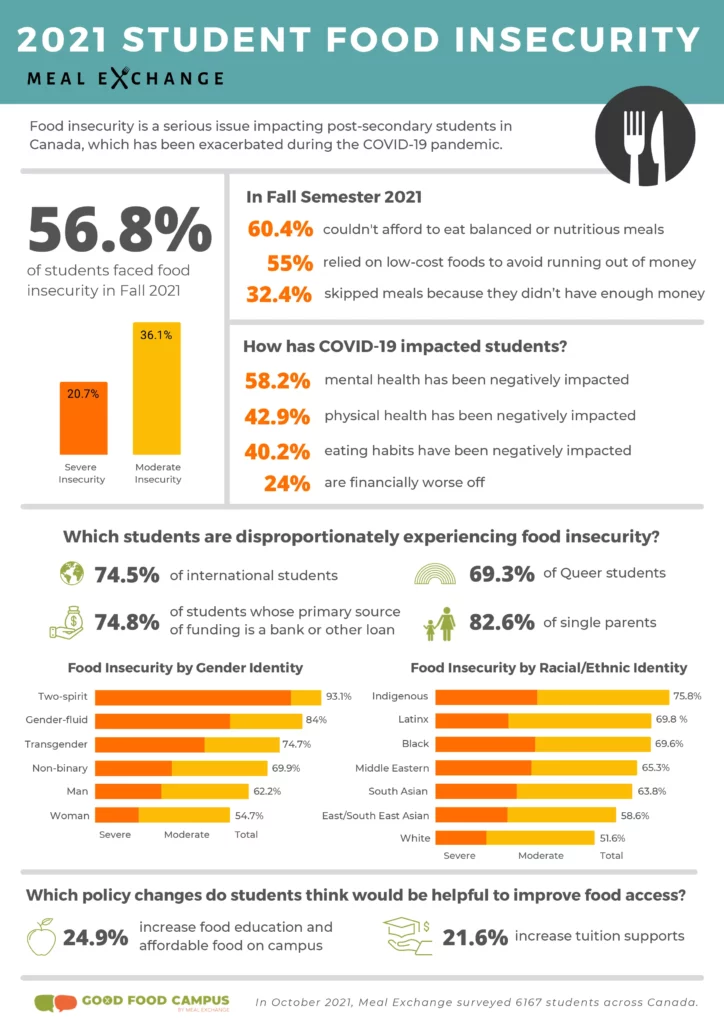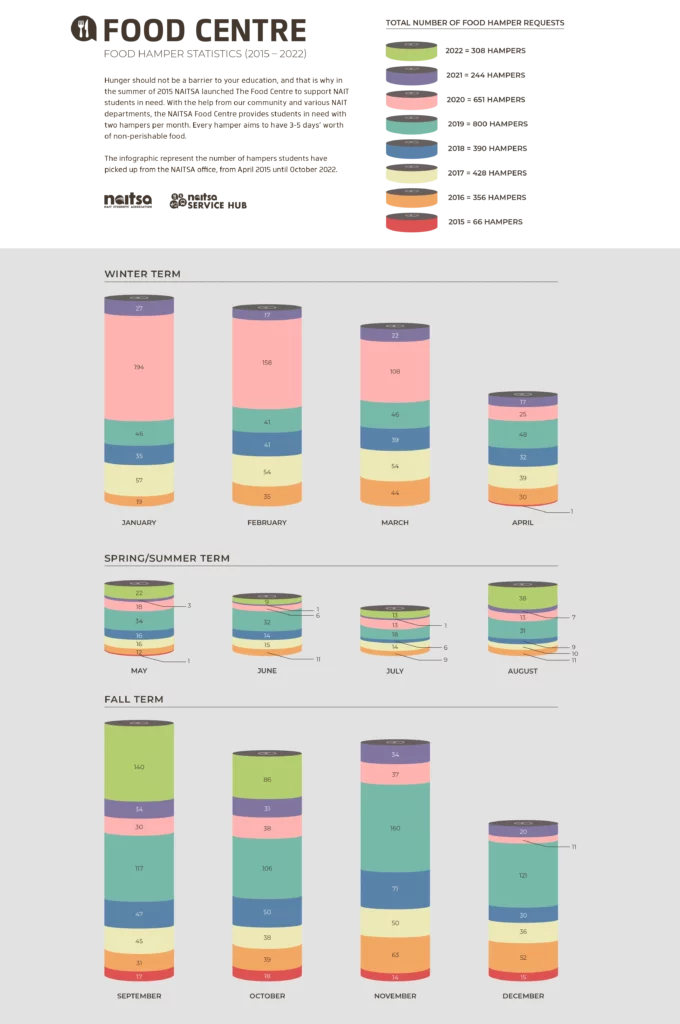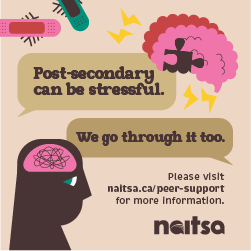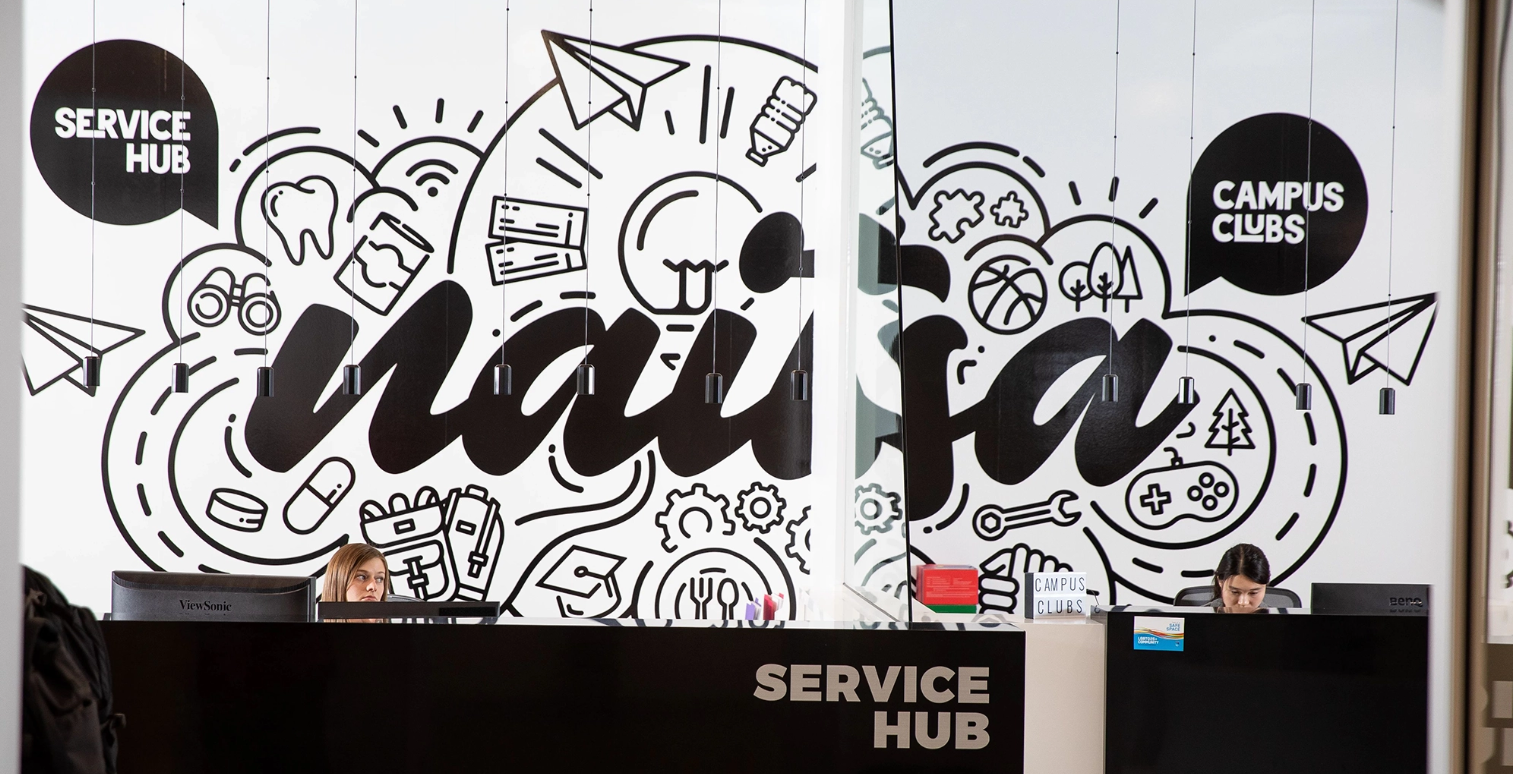More than 40 per cent of post-secondary students struggle with severe food insecurity in Alberta. Food security exists when all people, at all times, have physical, social and economic access to sufficient, safe and nutritious food which meets their dietary needs and food preferences for an active and healthy life.
NAITSA has found many ways to help with this problem with options like the Food Centre, that offers three to five days’ worth of emergency food, and The Güd Box, that gives students about 20 pounds of fresh produce for $30.

NAITSA’s Food Centre, which began in 2014, also aims to bridge the disconnect between studying and eating for students. “If you have to decide between studying and eating, we want you to feed yourself. We don’t want to see students drop out because they can’t afford to study and not feed themselves or their family members,” said NAITSA Service Hub Manager, Megan Brodeur.
NAITSA’s food bank service gave out its 3000th hamper in February 2022. The use of this service has rapidly increased since it began in 2015, excluding the pause during the COVID-19 lockdown. However, this semester there have been 213 hampers given thus far.
“We have seen a slow increase over the years, but this year alone has just exploded and we’re only into the second month … Normally if we have students that come to us saying ‘I’m in a financial crunch, what do I do?’ We say, ‘well we can’t really give you money off your tuition, but we can help you with food and at least that’ll free up some of your budget so you can purchase some other things.’”
According to PROOF, an organization that focuses on the research and reporting of household food insecurity statistics, “There is a substantial and persistent disconnect between the number of people living in food-insecure households versus those accessing food banks.”
Alberta has the highest household food insecurity in Canada, said a report by Statistics Canada. The province ranks at 20.3 per cent as of 2021. While Canada has a wide network of non-profit food providers, statistics show that there has been no meaningful progress in the permanent reduction of household food insecurity.

Last year, NAITSA saw an increase in new students that used the hampers, whereas NAITSA was used to returning students in the previous years. “[The returning students] would be regulars that we would see every two weeks and they were used to the service,” said Brodeur. NAITSA found that the majority of their food centre users are international students from single households.
This finding fits with studies done by mealexchange, an organization that “empowered Canadian post-secondary students and campuses to address food insecurity.” 74.5 per cent of students disproportionately experiencing food insecurity are international students, according to a survey of over 6000 Canadian students done in October 2021. 69.3 per cent are queer students, and 82.6 per cent are single parents.
“[Having] food that meets people’s preferences is a really important concept, keeping in mind the international student [body]. Recognizing that [international students] will have really, sometimes specific, dietary needs and cultural [preferences] that need to be met in order to be considered food secure,” said Executive Director of the Leftovers Foundation, Cory Rianson.

Students have reported that the main identifying factors contributing to their food insecurity are, respectively: cost of food, limited time to prepare food, tuition fees, housing costs, inadequate loans/grants and transportation. Mental health becomes affected by food insecurity impacting a student’s sense of agency, creating social/community isolation, negative impacts on their personal identity and/or implications on student success.
While the NAITSA Food Centre focuses on emergency food assistance, NAITSA hosts year-round events that give students access to free food without having to go to the food bank for a quick or occasional meal. One of the more relevant events is the Healthy Breakfast Start which offers a cart, located on campus once a month in varying places, that provides students with healthy breakfast options and works in tandem with their myWellness platform to check in on students’ mental health.
There are many steps that can be taken to lower food insecurity in households throughout campuses in Alberta– and Canada: combat the stigma, collaborative institutional approaches including programming, addressing the intersect between food insecurity and mental health and creating policies that support food security.
Students and staff at NAIT experiencing financial hardship can access the food centre and counselling through NAITSA where “hunger shouldn’t be a barrier to your education.”






